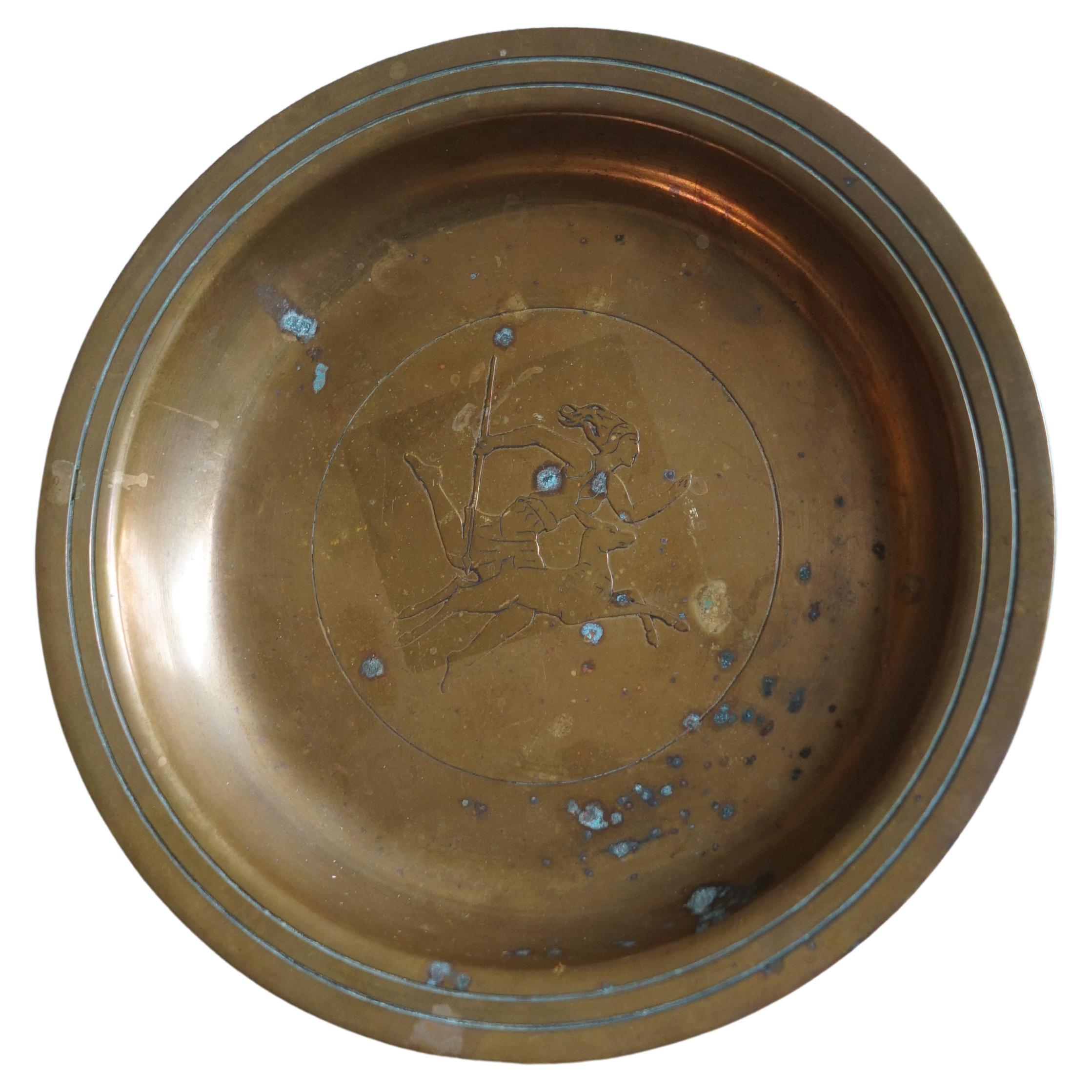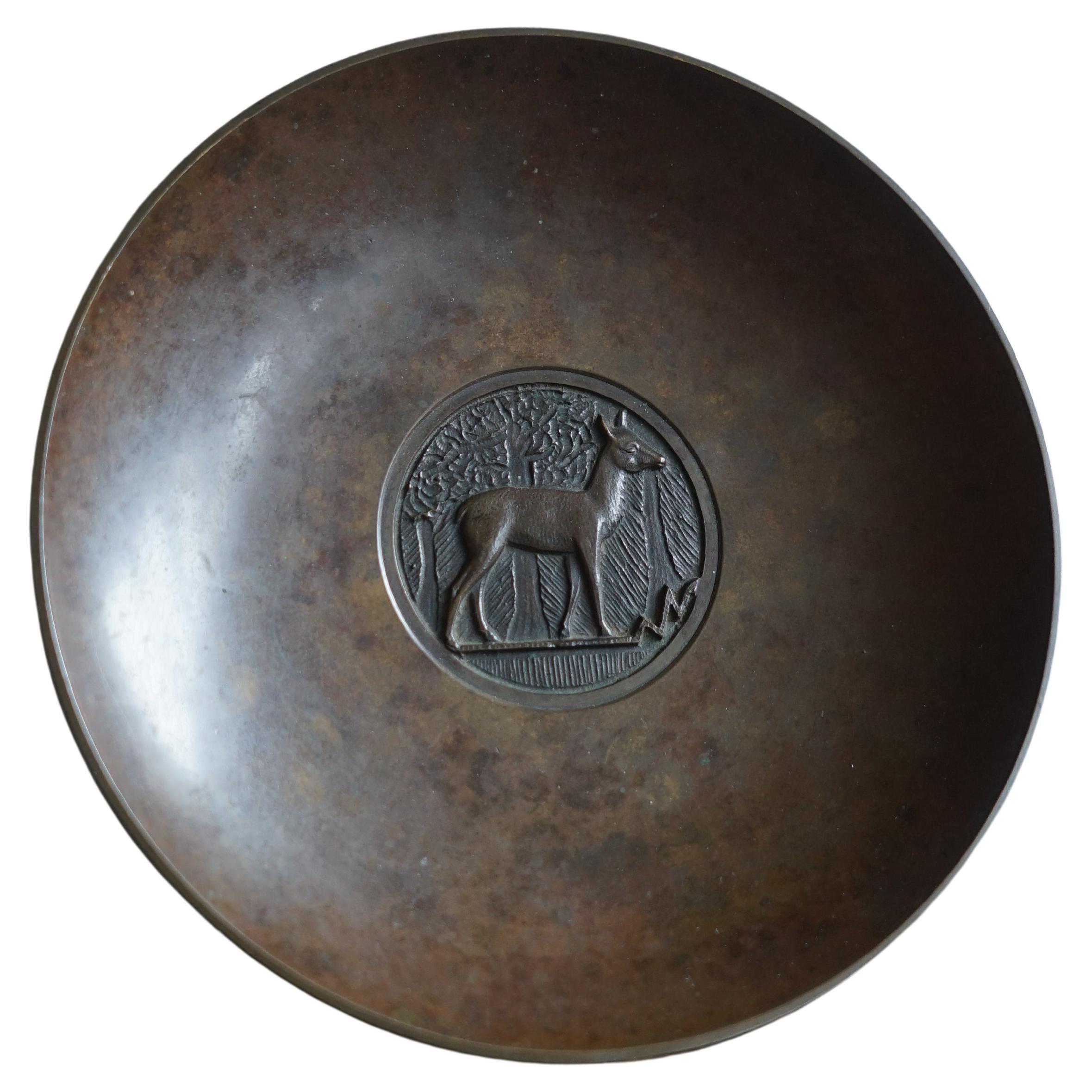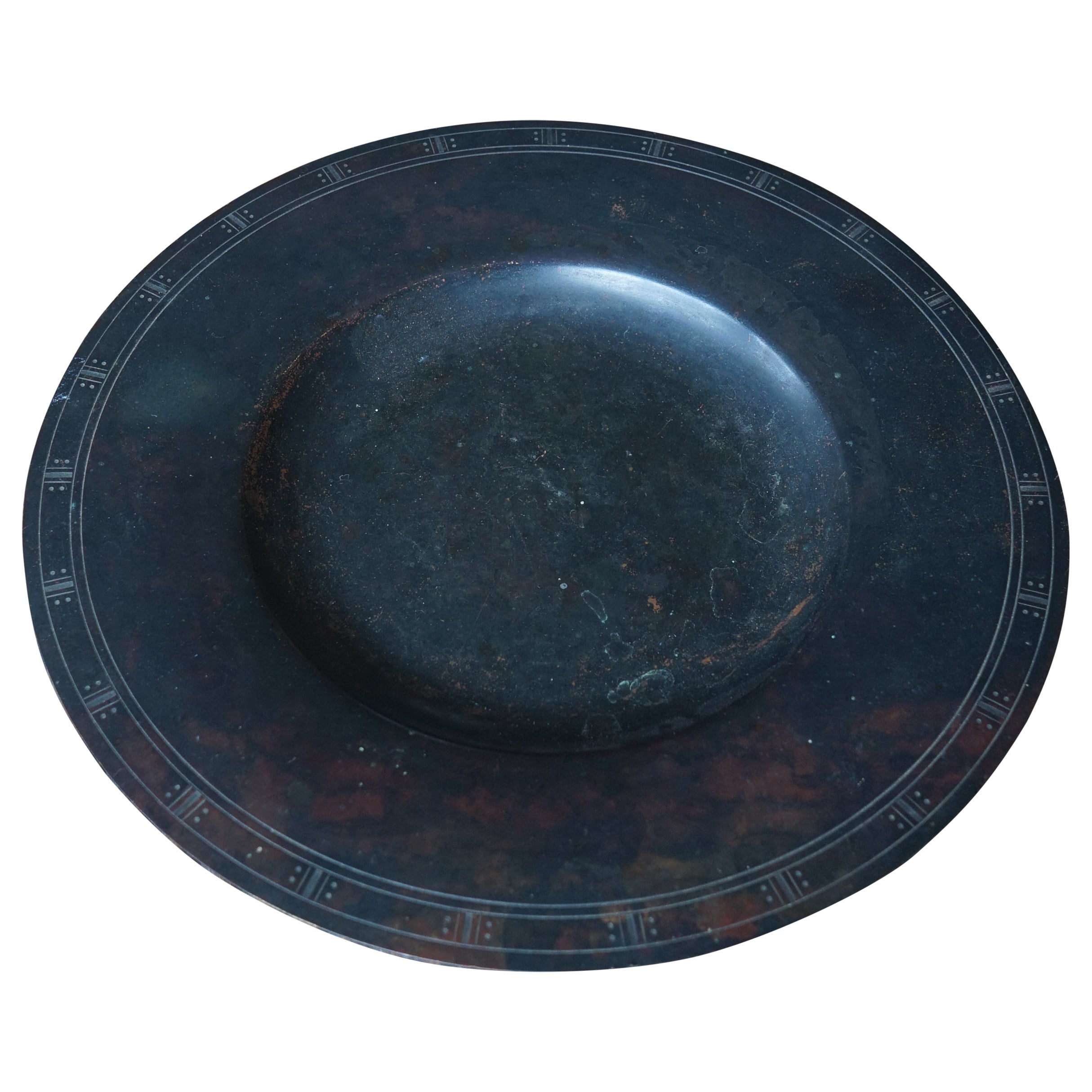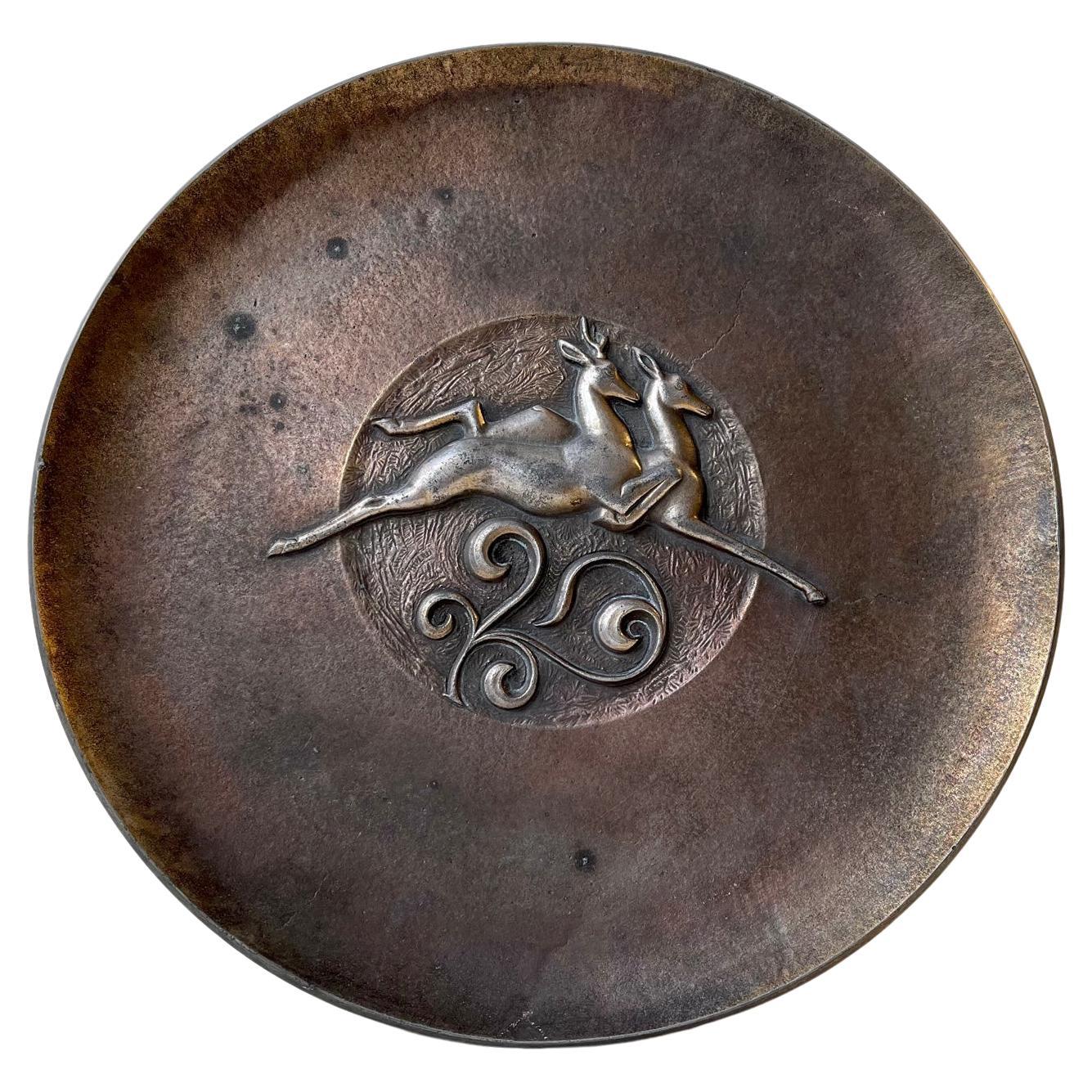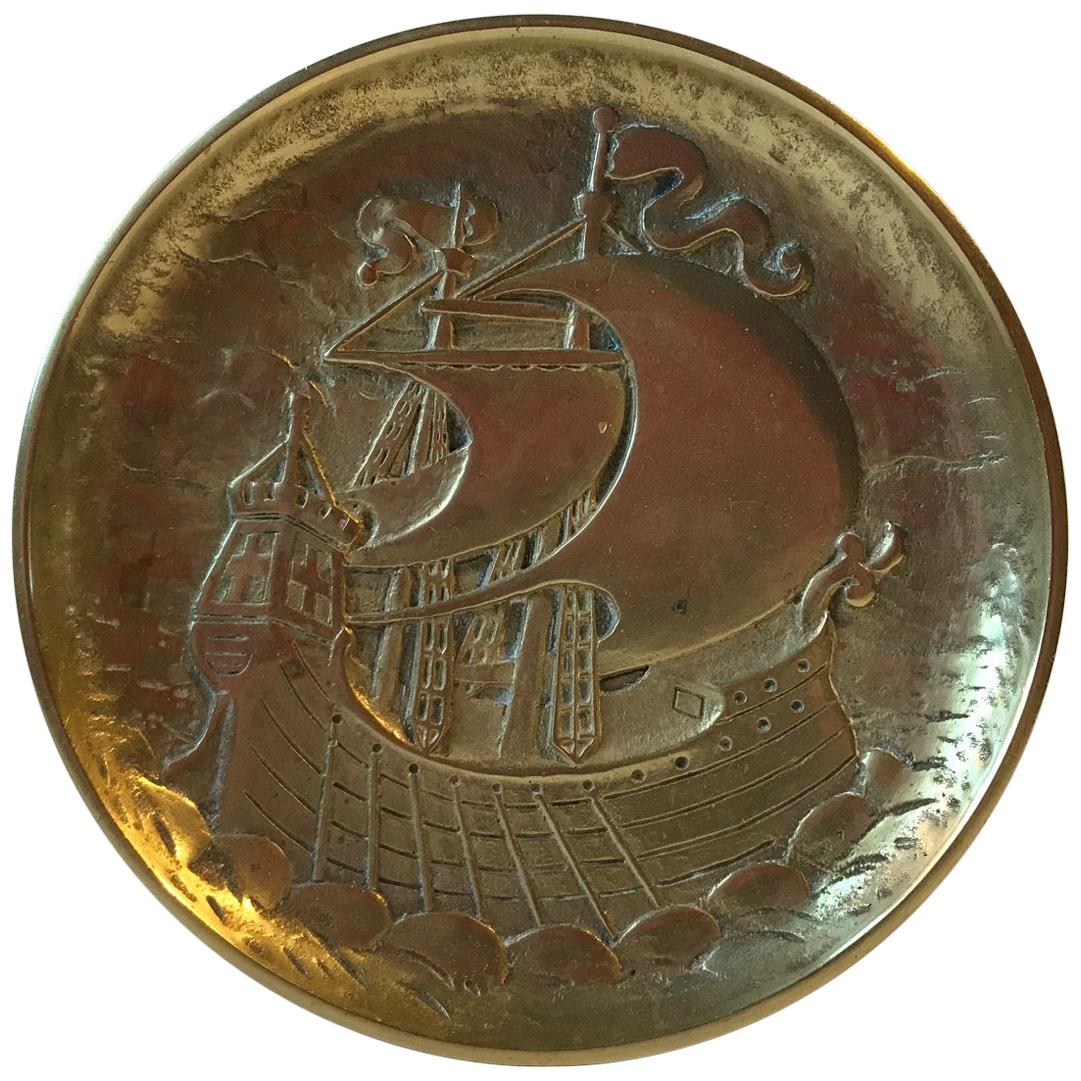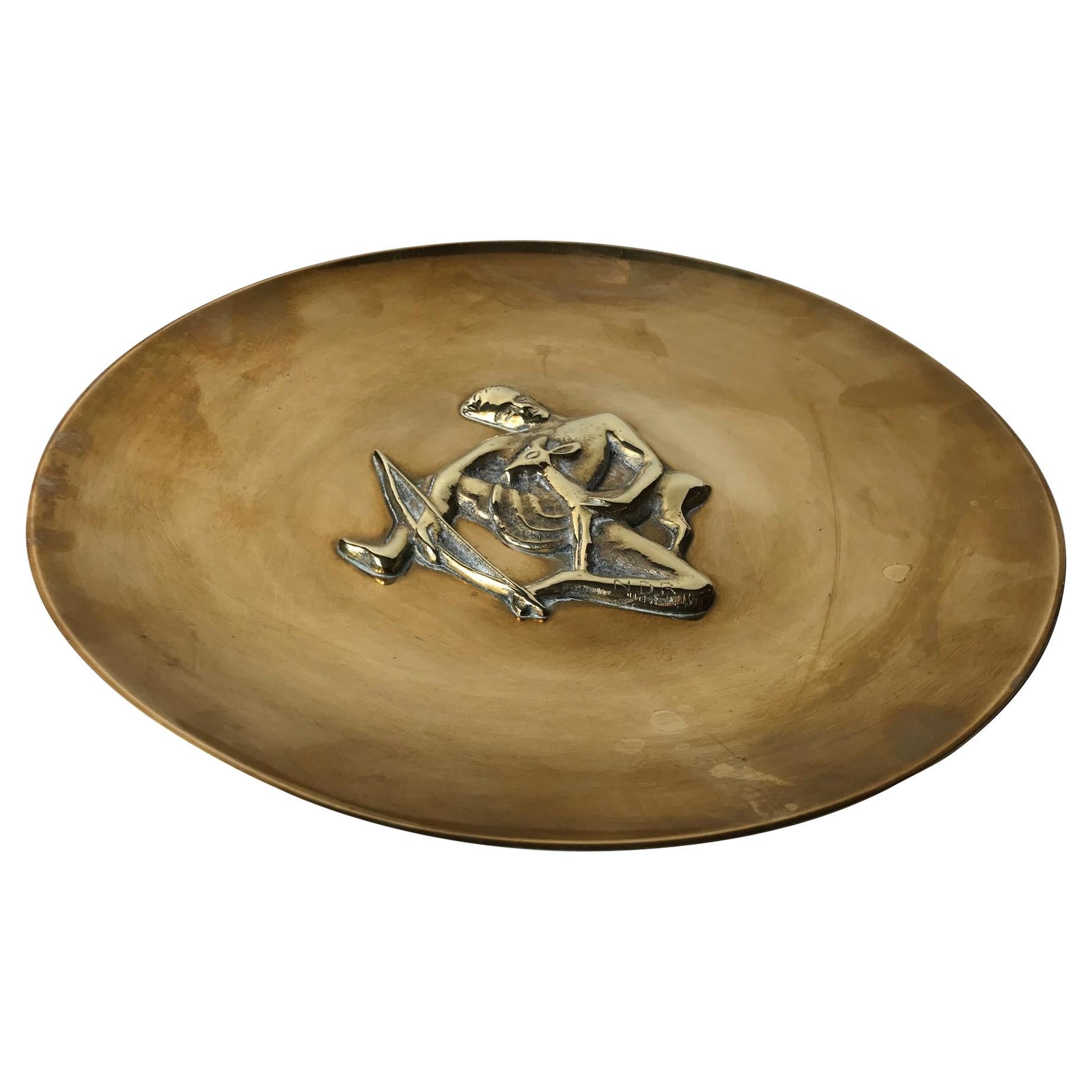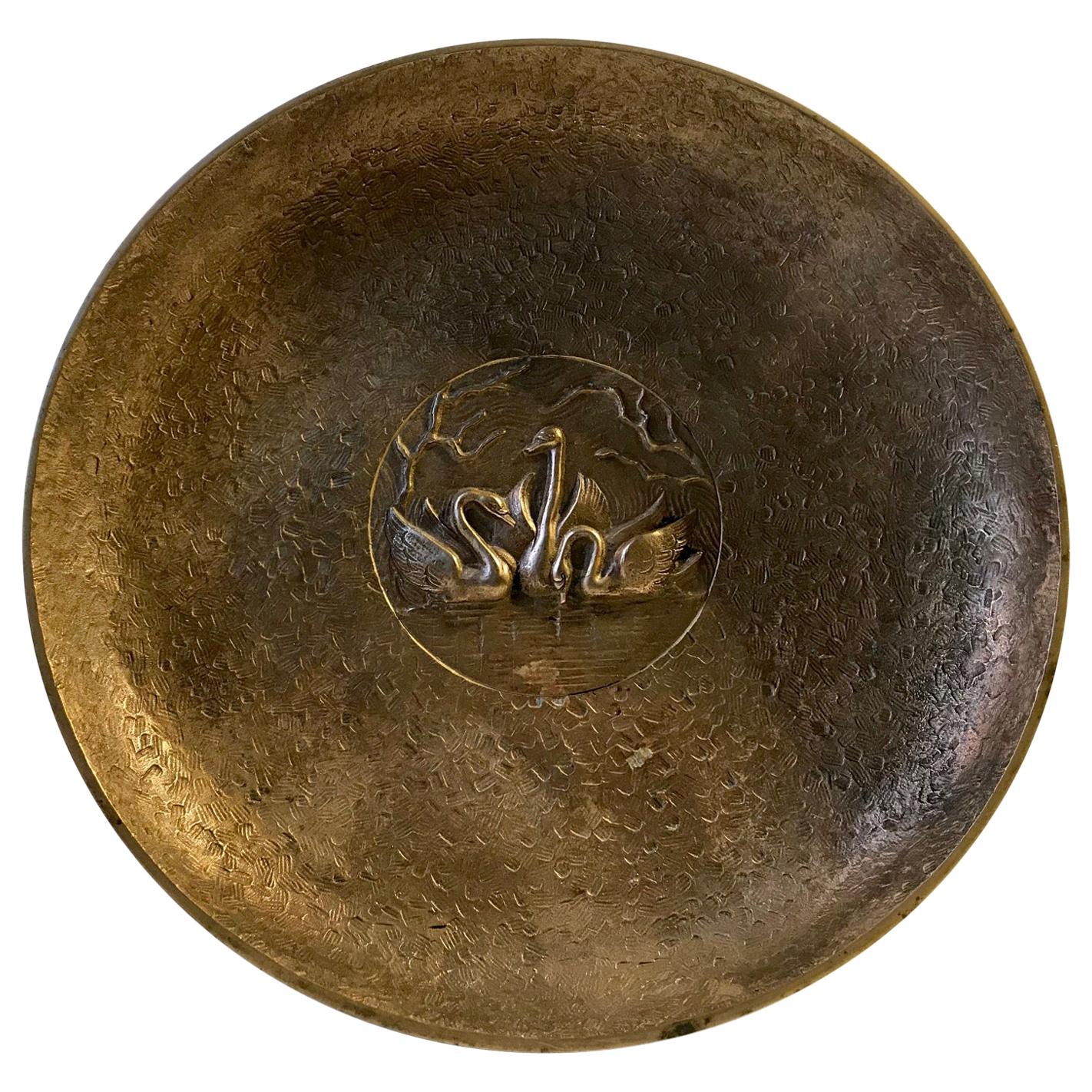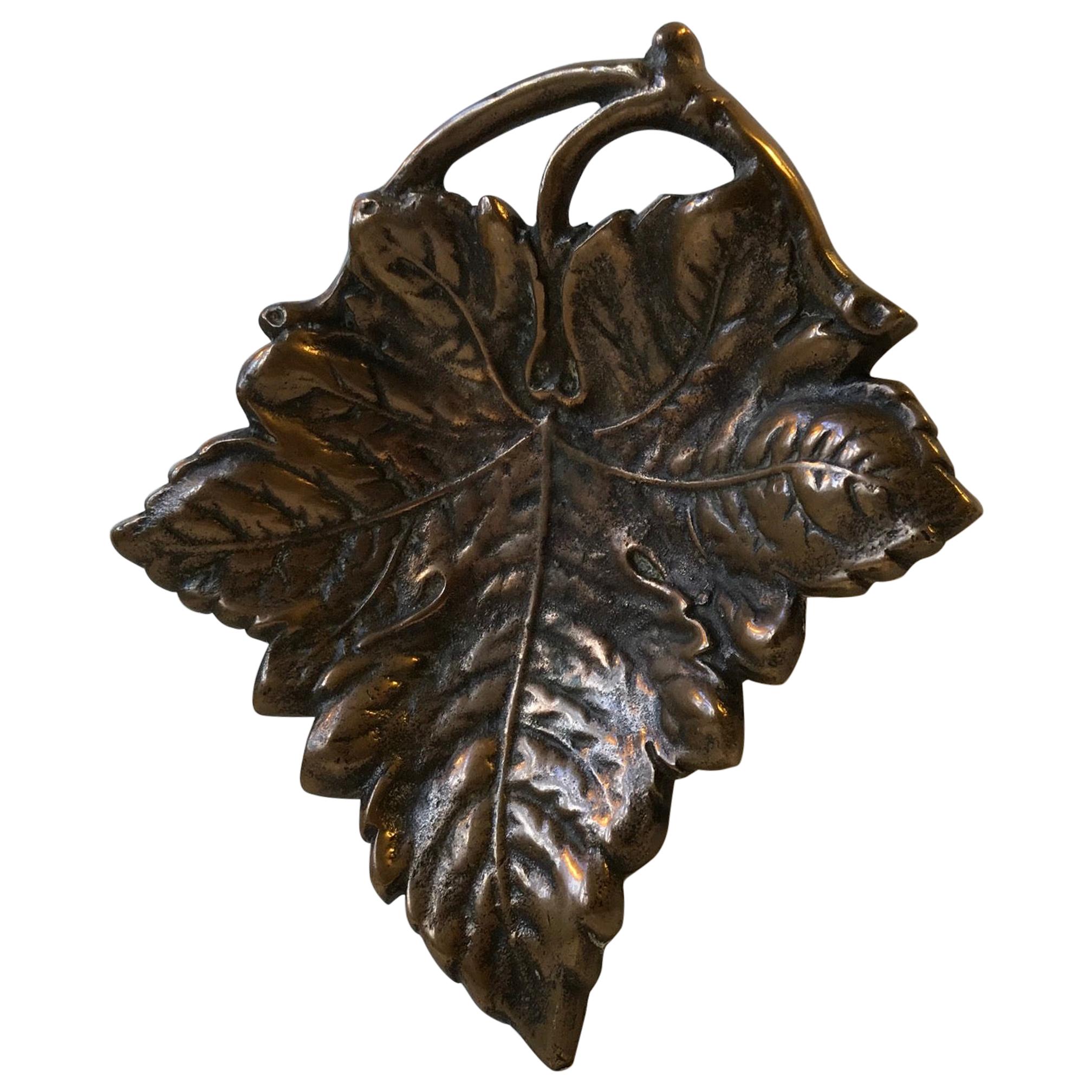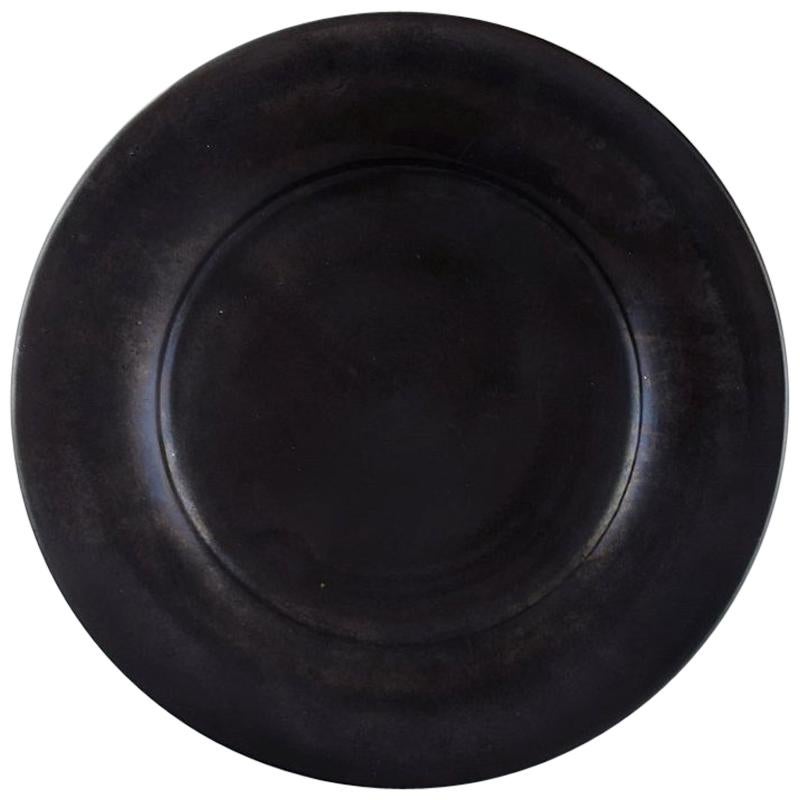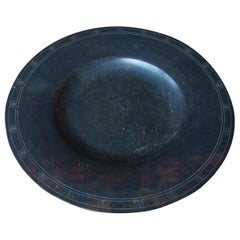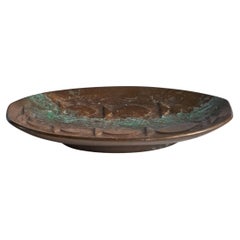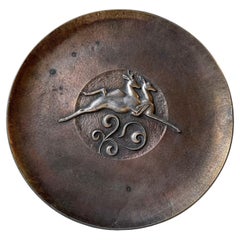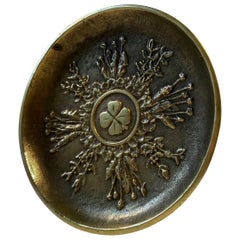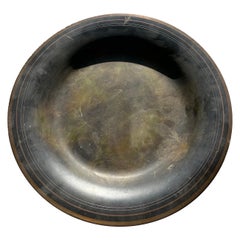
Big Agentor Bronze Dish, Denmark, 1930s
View Similar Items
Want more images or videos?
Request additional images or videos from the seller
1 of 5
Big Agentor Bronze Dish, Denmark, 1930s
About the Item
About the Seller
5.0
Vetted Seller
These experienced sellers undergo a comprehensive evaluation by our team of in-house experts.
1stDibs seller since 2022
25 sales on 1stDibs
More From This SellerView All
- Agentor Art Deco Bronze tray Denmark 1930sLocated in Valby, 84Beautiful patinaed Art Deco Bronze dish by danish manufacture Agentor from the 1930's. The Dish has the motive of a woman running with her hunting dog next to her. This dish is the perfect piece as a decorative element but can also be used as a fruit or nut bowl or whatever else you could think of. The dish is signed Agentor Bronce number 47. Art Deco, short for the French Arts Décoratifs, and sometimes just called Deco, is a style of visual arts, architecture, and product design, that first appeared in France in the 1910s (just before World War I), and flourished in the United States and Europe during the 1920s and 1930s. Through styling and design of the exterior and interior of anything from large structures to small objects, including how people look (clothing, fashion and jewelry), Art Deco has influenced bridges, buildings (from skyscrapers to cinemas), ships, ocean liners, trains, cars, trucks, buses, furniture, and everyday objects like radios and vacuum cleaners. It got its name after the 1925 Exposition internationale des arts décoratifs et industriels modernes (International Exhibition of Modern Decorative and Industrial Arts) held in Paris. Art Deco combined modern styles with fine craftsmanship and rich materials. During its heyday, it represented luxury, glamour, exuberance, and faith in social and technological progress. From its outset, Art Deco was influenced by the bold geometric forms of Cubism and the Vienna Secession; the bright colours of Fauvism and of the Ballets Russes; the updated craftsmanship of the furniture of the eras of Louis XVI and Louis Philippe I; and the exoticized styles of China, Japan, India, Persia, ancient Egypt and Maya art. It featured rare and expensive materials, such as ebony and ivory, and exquisite craftsmanship. The Empire State Building, Chrysler Building, and other skyscrapers of New York City built during the 1920s and 1930s are monuments to the style. In the 1930s, during the Great Depression, Art Deco became more subdued. New materials arrived, including chrome plating, stainless steel and plastic. A sleeker form of the style, called Streamline Moderne, appeared in the 1930s, featuring curving forms and smooth, polished surfaces. Art Deco is one of the first truly international styles, but its dominance ended with the beginning of World War II and the rise of the strictly functional and unadorned styles of modern architecture and the International Style of architecture that followed. This dish are the perfect detail for any interior from the modern Wabi Sabi style...Category
Vintage 1930s Danish Art Deco Decorative Dishes and Vide-Poche
MaterialsBronze
- Evan Jensen Bronze Dish, Denmark, 1930sBy Evan JensenLocated in Valby, 84Bronze Art deco dish/charger by Danish artist Evan Jensen from the 1930's in a beautiful original condition, the dish is signed Evan Jensen Copenhagen Bronze and has model number 320. The dish has a very decorative image of a deer on the front. The dish is the perfect dish to have standing as a piece of art but can also be used as a bowl to store stuff like fruit or nuts or whatever else you could think of. Art Deco, short for the French Arts Décoratifs, and sometimes just called Deco, is a style of visual arts, architecture, and product design, that first appeared in France in the 1910s (just before World War I), and flourished in the United States and Europe during the 1920s and 1930s. Through styling and design of the exterior and interior of anything from large structures to small objects, including how people look (clothing, fashion and jewelry), Art Deco has influenced bridges, buildings (from skyscrapers to cinemas), ships, ocean liners, trains, cars, trucks, buses, furniture, and everyday objects like radios and vacuum cleaners. It got its name after the 1925 Exposition internationale des arts décoratifs et industriels modernes (International Exhibition of Modern Decorative and Industrial Arts) held in Paris. Art Deco combined modern styles with fine craftsmanship and rich materials. During its heyday, it represented luxury, glamour, exuberance, and faith in social and technological progress. From its outset, Art Deco was influenced by the bold geometric forms of Cubism and the Vienna Secession; the bright colours of Fauvism and of the Ballets Russes; the updated craftsmanship of the furniture of the eras of Louis XVI and Louis Philippe I; and the exoticized styles of China, Japan, India, Persia, ancient Egypt and Maya art. It featured rare and expensive materials, such as ebony and ivory, and exquisite craftsmanship. The Empire State Building, Chrysler Building, and other skyscrapers of New York City built during the 1920s and 1930s are monuments to the style. In the 1930s, during the Great Depression, Art Deco became more subdued. New materials arrived, including chrome plating, stainless steel and plastic. A sleeker form of the style, called Streamline Moderne, appeared in the 1930s, featuring curving forms and smooth, polished surfaces. Art Deco is one of the first truly international styles, but its dominance ended with the beginning of World War II and the rise of the strictly functional and unadorned styles of modern architecture and the International Style of architecture that followed. This dish is the perfect detail for any interior from the modern Wabi Sabi style...Category
Vintage 1930s Danish Scandinavian Modern Decorative Dishes and Vide-Poche
MaterialsBronze
- Just Andersen Art Deco Light Bronze Dish Denmark 1930sBy Just AndersenLocated in Valby, 84Just Andersen Art Deco dish in beautiful patinaed light bronze made in Denmark in the 1930's. This dish is the perfect piece as a decorative element but can also be used as a fruit or nut bowl or whatever else you could think of. The dish is signed Just Andersen LB 1734. Art Deco, short for the French Arts Décoratifs, and sometimes just called Deco, is a style of visual arts, architecture, and product design, that first appeared in France in the 1910s (just before World War I), and flourished in the United States and Europe during the 1920s and 1930s. Through styling and design of the exterior and interior of anything from large structures to small objects, including how people look (clothing, fashion and jewelry), Art Deco has influenced bridges, buildings (from skyscrapers to cinemas), ships...Category
Vintage 1930s Danish Scandinavian Modern Decorative Dishes and Vide-Poche
MaterialsBronze
- Just Andersen Art Deco Solid Bronze bowl model B161, Denmark 1930’sBy Just AndersenLocated in Valby, 84Discover a piece of Danish design history with this exquisite vintage solid bronze bowl, model B161, crafted by the iconic artist Just Andersen in the 1930s. This stunning bowl epito...Category
Vintage 1930s Danish Scandinavian Modern Decorative Bowls
MaterialsBronze
- Decorative Italian Solid Bronze Dish, Italy 1970’sLocated in Valby, 84Elevate your decor with this stunning vintage Italian solid bronze dish, crafted in the artistic tradition of 1970s Italy. This exquisite piece exudes timeless elegance and sophistic...Category
Vintage 1970s Italian Mid-Century Modern Decorative Dishes and Vide-Poche
MaterialsBronze
- Evan Jensen Bronze Vase, Denmark, 1930sBy Evan JensenLocated in Valby, 84Rare bronze vase attributed Evan Jensen made in Denmark in the 1930s. The vase is made by a unknown danish caster called Antika but is a typical Evan Jensen shaped vase and has typical Evan Jensen detail. The vase is in good condition with a beautiful original patina. Art Deco, short for the French Arts Décoratifs, and sometimes just called Deco, is a style of visual arts, architecture, and product design, that first appeared in France in the 1910s (just before World War I), and flourished in the United States and Europe during the 1920s and 1930s. Through styling and design of the exterior and interior of anything from large structures to small objects, including how people look (clothing, fashion and jewelry), Art Deco has influenced bridges, buildings (from skyscrapers to cinemas), ships, ocean liners, trains, cars, trucks, buses, furniture, and everyday objects like radios and vacuum cleaners. It got its name after the 1925 Exposition internationale des arts décoratifs et industriels modernes (International Exhibition of Modern Decorative and Industrial Arts) held in Paris. Art Deco combined modern styles with fine craftsmanship and rich materials. During its heyday, it represented luxury, glamour, exuberance, and faith in social and technological progress. From its outset, Art Deco was influenced by the bold geometric forms of Cubism and the Vienna Secession; the bright colours of Fauvism and of the Ballets Russes; the updated craftsmanship of the furniture of the eras of Louis XVI and Louis Philippe I; and the exoticized styles of China, Japan, India, Persia, ancient Egypt and Maya art. It featured rare and expensive materials, such as ebony and ivory, and exquisite craftsmanship. The Empire State Building, Chrysler Building, and other skyscrapers of New York City built during the 1920s and 1930s are monuments to the style. In the 1930s, during the Great Depression, Art Deco became more subdued. New materials arrived, including chrome plating, stainless steel and plastic. A sleeker form of the style, called Streamline Moderne, appeared in the 1930s, featuring curving forms and smooth, polished surfaces. Art Deco is one of the first truly international styles, but its dominance ended with the beginning of World War II and the rise of the strictly functional and unadorned styles of modern architecture and the International Style of architecture that followed. This vase is the perfect detail for any interior from the modern Wabi Sabi style...Category
Vintage 1920s Danish Scandinavian Modern Vases
MaterialsBronze
You May Also Like
- Danish Designer, Decorative Dish, Bronze, Denmark 1930sLocated in High Point, NCA small decorative bronze dish, designed and produced in Denmark, 1930s.Category
Vintage 1930s Danish Scandinavian Modern Decorative Dishes and Vide-Poche
MaterialsBronze
- Art Deco Bronze Dish with Antelopes, 1930sLocated in Esbjerg, DKA stylish bronze dish, plate or flat centerpiece bowl. Beautiful natural silvery-copper patina. Its has a center motif of antelopes in relief. Its European made probably Scandinavia,...Category
Vintage 1930s European Art Deco Decorative Dishes and Vide-Poche
MaterialsBronze
$306 Sale Price25% Off - Art Deco Four Clover Bronze Dish, 1930sLocated in Esbjerg, DKArt Deco bronze bowl or small charger with four clover motif surrounded by floral decorations - all in relief. It is designed by Danish Christian Hansen and manufactured in his metal...Category
Vintage 1930s Danish Art Deco Decorative Dishes and Vide-Poche
MaterialsBronze
$239 Sale Price20% Off - Art Deco Bronze Dish with Frigate, 1930sLocated in Esbjerg, DKA nautical themed heavy bronze dish or ashtray depicting a 17th century Frigate (Fregat) battleship. It was made in Denmark during the 1930s. Distinct Art Deco styling to the slightl...Category
Vintage 1930s Danish Art Deco Decorative Dishes and Vide-Poche
MaterialsBronze
$196 Sale Price20% Off - Art Deco Bronze Dish with Bow Hunter by N. Dam Ravn, Denmark, 1930sBy N. Dam RavnLocated in Esbjerg, DKArt Deco bronze bowl with centre motif of hunter and deer in relief. It was designed by Danish Sculptor N. Dam Ravn and manufactured by Nordisk Malm in Denmark during the 1930s. The ...Category
Vintage 1930s Danish Art Deco Decorative Bowls
MaterialsBronze
$364 Sale Price25% Off - Tinos Art Deco Bronze Dish with Swans, 1930sBy TinosLocated in Esbjerg, DKHand-decorated, textured and heavy Art Deco bronze bowl or dish with a center-motif of swans in relief. Designed and manufactured by Tinos in Copenhagen Denmark during the 1930s. The...Category
Vintage 1930s Danish Art Deco Decorative Dishes and Vide-Poche
MaterialsBronze
$501 Sale Price20% Off
